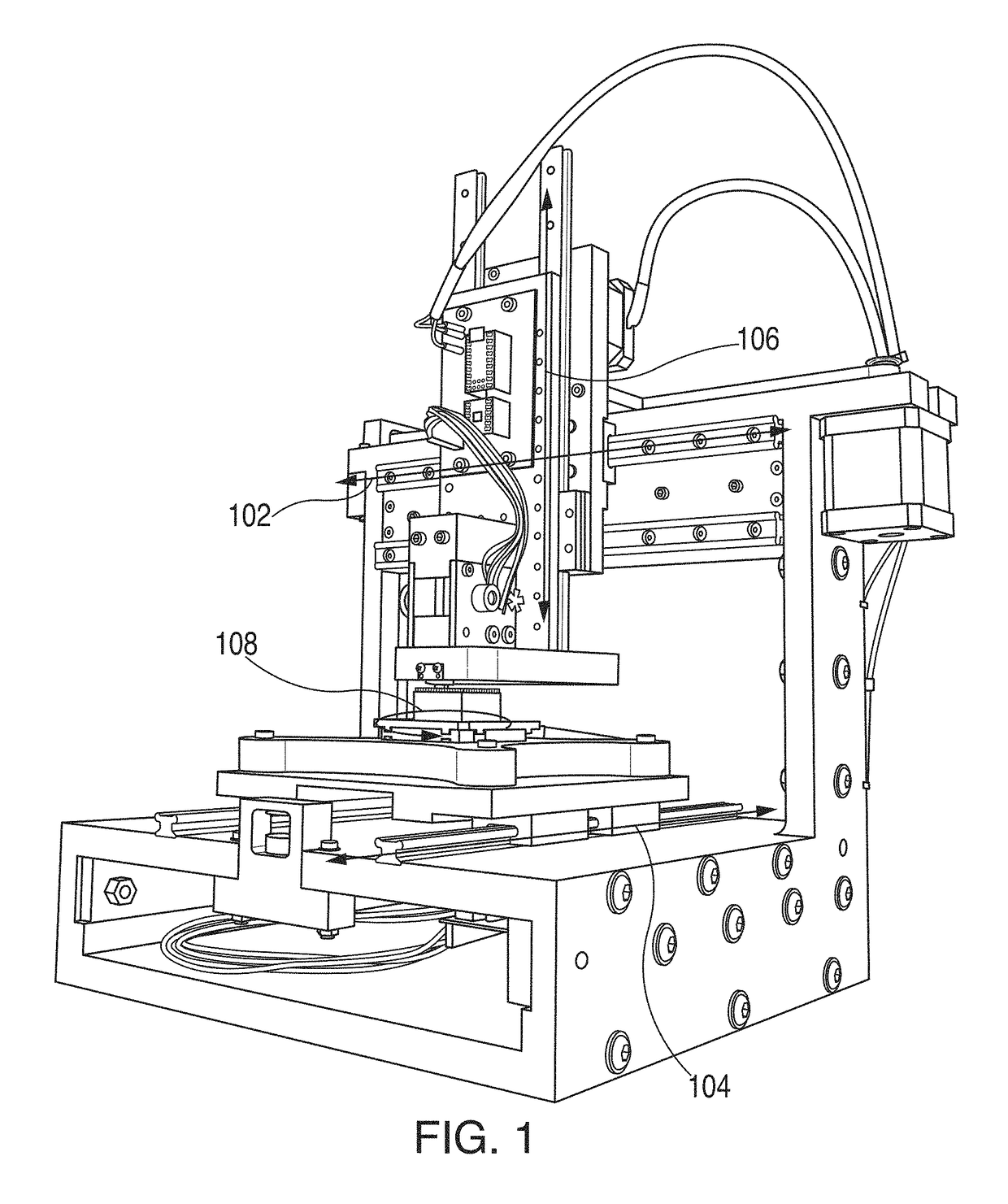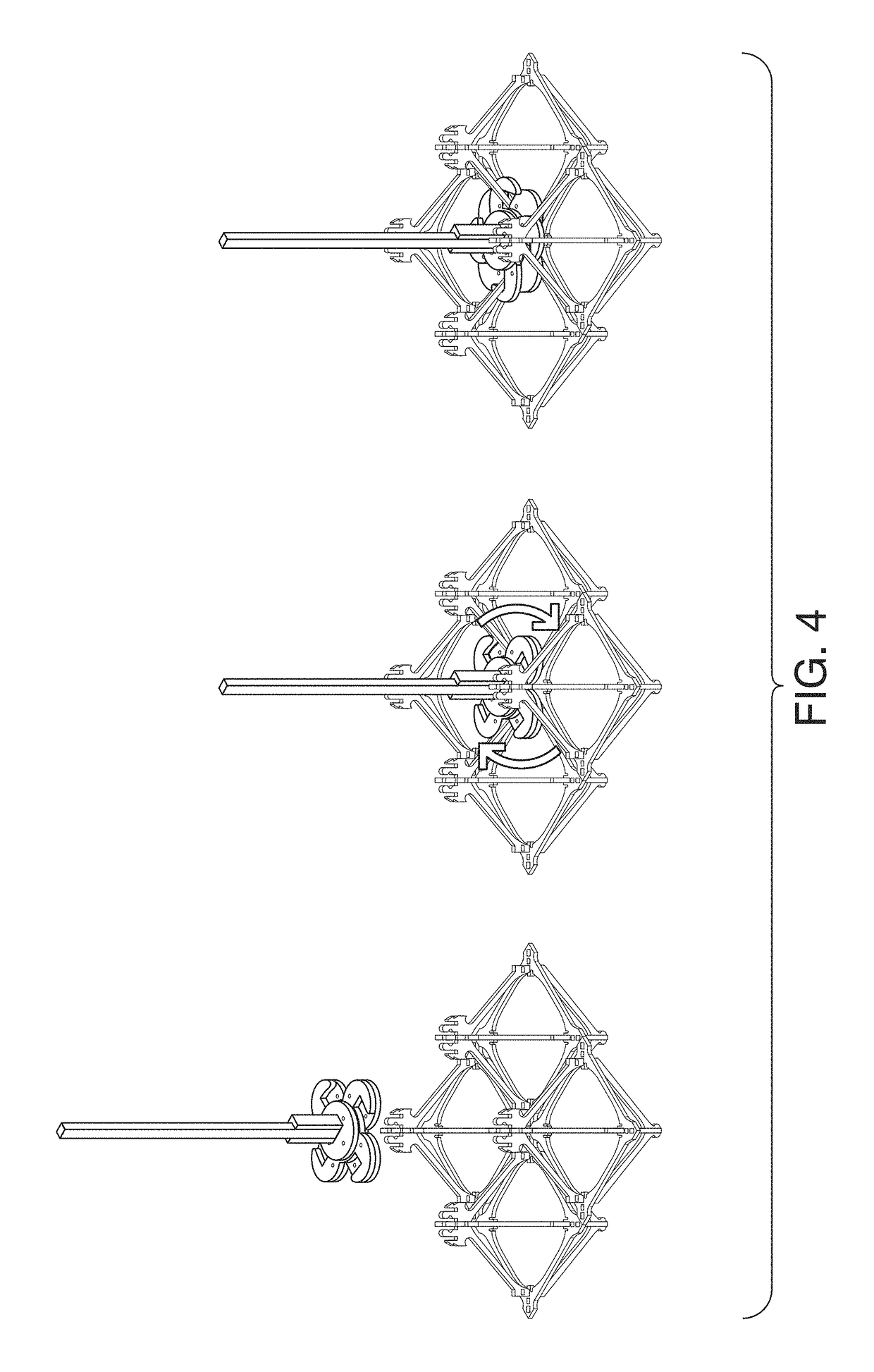Discrete assemblers utilizing conventional motion systems
a motion system and assembler technology, applied in the direction of electric programme control, force/torque/work measurement apparatus, program control, etc., can solve the problems of limited plastics printing with a relatively narrow range of material properties, limited substrate material choice, and inability to match the properties and variety of electronic materials needed to print a full range of electronic devices. , to achieve the effect of more precise construction of objects
- Summary
- Abstract
- Description
- Claims
- Application Information
AI Technical Summary
Benefits of technology
Problems solved by technology
Method used
Image
Examples
Embodiment Construction
[0030]An embodiment of the present invention positions a toolhead relative to the structure being fabricated using three conventional linear axes: X 102, Y 104, and Z 106 (FIG. 1). A fourth C-axis (108) may be necessary if the part has a rotation asymmetry and requires a rotation about the Z-axis between layers (as is the case of the part pictured in FIG. 2 and structure pictured in FIG. 3). Conventional motion systems including, but not limited to, timing belts, leadscrews, and rack and pinion mechanisms may be used as power transmission between the motors and the positioning stages. The dimensions of FIG. 2 (in inches) are 0.010 202, 0.1950 204, 0.010 206, 0.05 208, and 0.1250 210. FIG. 3 shows a discretely assembled structure 302 and a substrate 304.
[0031]Another embodiment of the present invention positions a toolhead relative to a lattice structure along three conventional linear axes of motion (X, Y, and Z), and also includes a foot mechanisms for moving the machine relative t...
PUM
| Property | Measurement | Unit |
|---|---|---|
| speed | aaaaa | aaaaa |
| thickness | aaaaa | aaaaa |
| conductance | aaaaa | aaaaa |
Abstract
Description
Claims
Application Information
 Login to View More
Login to View More - R&D
- Intellectual Property
- Life Sciences
- Materials
- Tech Scout
- Unparalleled Data Quality
- Higher Quality Content
- 60% Fewer Hallucinations
Browse by: Latest US Patents, China's latest patents, Technical Efficacy Thesaurus, Application Domain, Technology Topic, Popular Technical Reports.
© 2025 PatSnap. All rights reserved.Legal|Privacy policy|Modern Slavery Act Transparency Statement|Sitemap|About US| Contact US: help@patsnap.com



